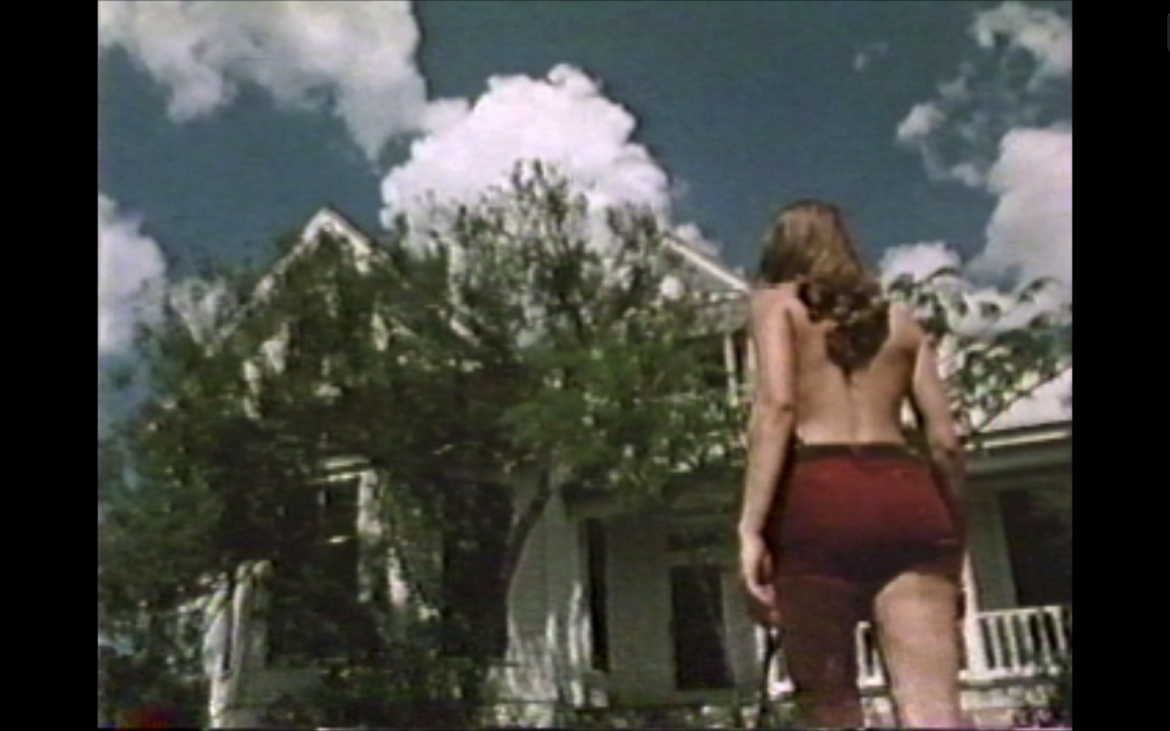If we’re going to talk about vegan subtexts in horror cinema, we eventually are going to have to talk about The Texas Chainsaw Massacre, the macabre granddaddy of the trope.
Held up as “the ultimate pro-vegetarian film”, trumpeted by the perpetual attention-seekers and noted film critics at PeTA (in a list that also includes Lloyd Kaufman’s Poultrygeist: Night of the Chicken Dead, which is not quite as bad as ThanksKilling but still among the worst movies I’ve ever seen), and a mainstay of thinkpieces featuring “films with hidden activist agendas,” the subtext of Tobe Hooper’s horror classic is already well-established. Hell, ask Hooper himself: “It’s a film about meat.”
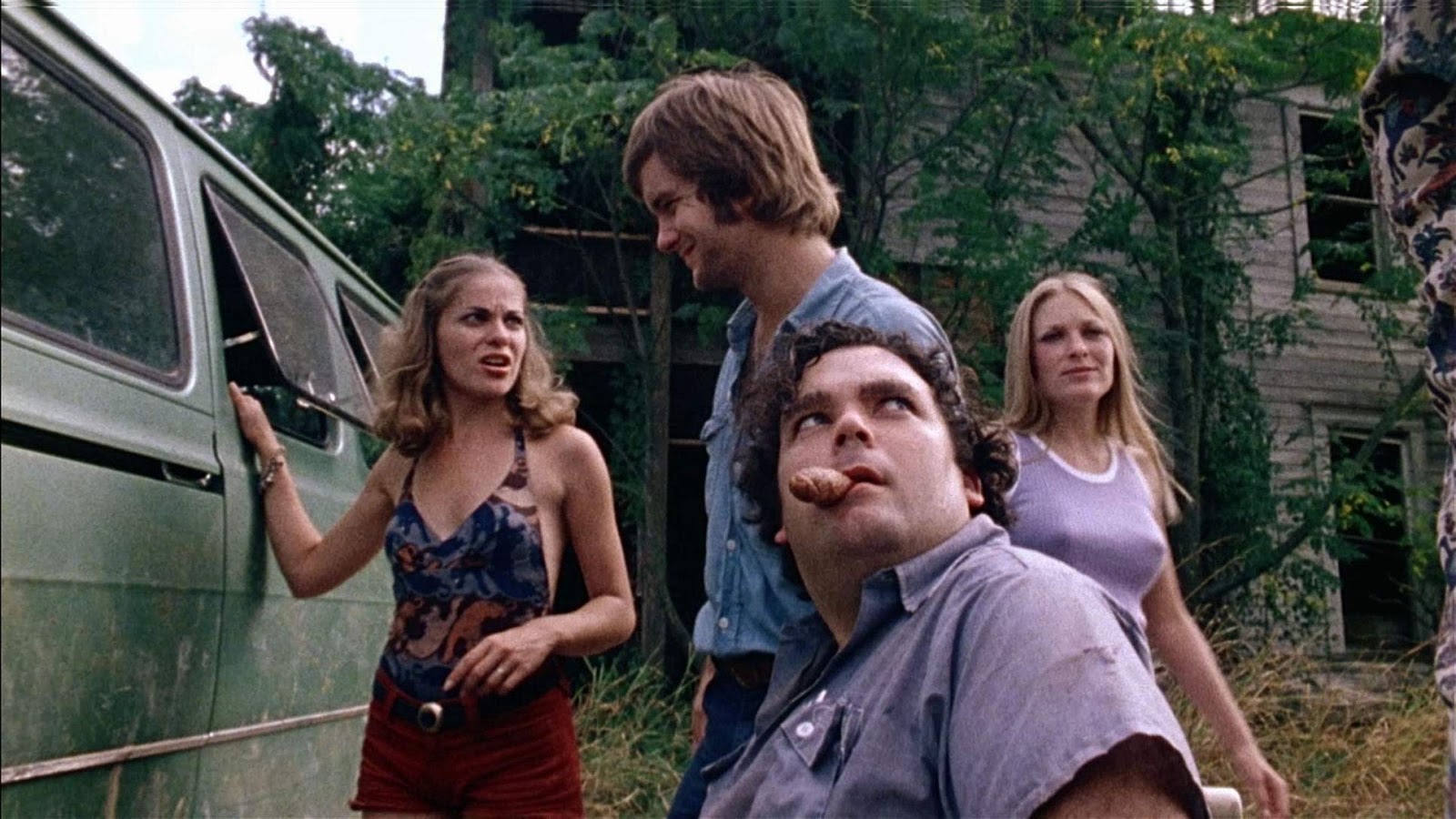
Texas Chainsaw‘s celebrated status as an animal rights film still bears more than a passing mention, if only because it was among the first to so explicitly locate horror’s emphasis on vulnerability and instrumental use in the larger social context of slaughterhouse work and economic privation. Whereas a recent film like The Herd attempts to foreground the metaphor in service to advocacy and the sexual politics of meat/dairy, Texas Chainsaw derives its lasting power through allowing for multiple interpretations rooted in unsettling allusion.
Hooper sets this up right from the start. An early scene in Texas Chainsaw, ably subjected to formalist analysis on Horror Homeroom, forces the viewer to engage in a politics of sight:
In their van, and right before they pick up the hitchhiker, the teens become overwhelmed by a stench. Looking out the window, Franklin declares (with some excitement) that it’s the “old slaughterhouse.” “You see that building there,” he says, gesturing beyond the van, “that’s where they kill ‘em. They bash ‘em in the head with a big sledgehammer.” Immediately afterward, the camera uncannily gives us a view the group would actually not be able to see from their van—a close-up the head of one of the cows in the slaughterhouse… Almost immediately, though, the camera pulls away and offers the view the teens do have—just a building, the living animals invisible somewhere inside it, a cattle mass, a mere blur as the human protagonists speed by on the adjacent highway.
Nothing shocking happens, by horror standards, but we are immediately aware of distance, both physical and moral. The slaughterhouse is the dominant fixture in Texas Chainsaw — the killers are slaughterhouse workers all, from a long line of the same — and yet it is barely glimpsed.
This is crucial to a film in which blood is also largely absent from the screen, despite what many audiences feel they remember about it. Humans are bashed on the 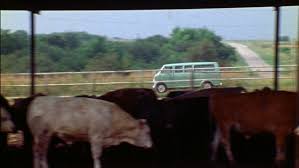 skull, hung on hooks, their carcasses thrown in freezers. But as in the world outside the film, the mechanics of killing and consumption are omnipresent but invisible, a “mere blur as human protagonists speed by.”
skull, hung on hooks, their carcasses thrown in freezers. But as in the world outside the film, the mechanics of killing and consumption are omnipresent but invisible, a “mere blur as human protagonists speed by.”
The following shot, however, reverses perspective, and we see the van from inside the pen. We are looking at those humans through cows’ eyes.
By complicating the POV, Hooper has rerouted that meaning, placing viewers in the position of livestock, just as the protagonists will find themselves as the film progresses. A final close-up of a cow’s eye prefigures the terrifying dinner table sequence, in which a close-up of Pam’s bloodshot and panicked eyeball almost seems to pulse due to the camera’s proximity, while her would-be renderers sit down for their version of a family meal and have some fun at her expense.

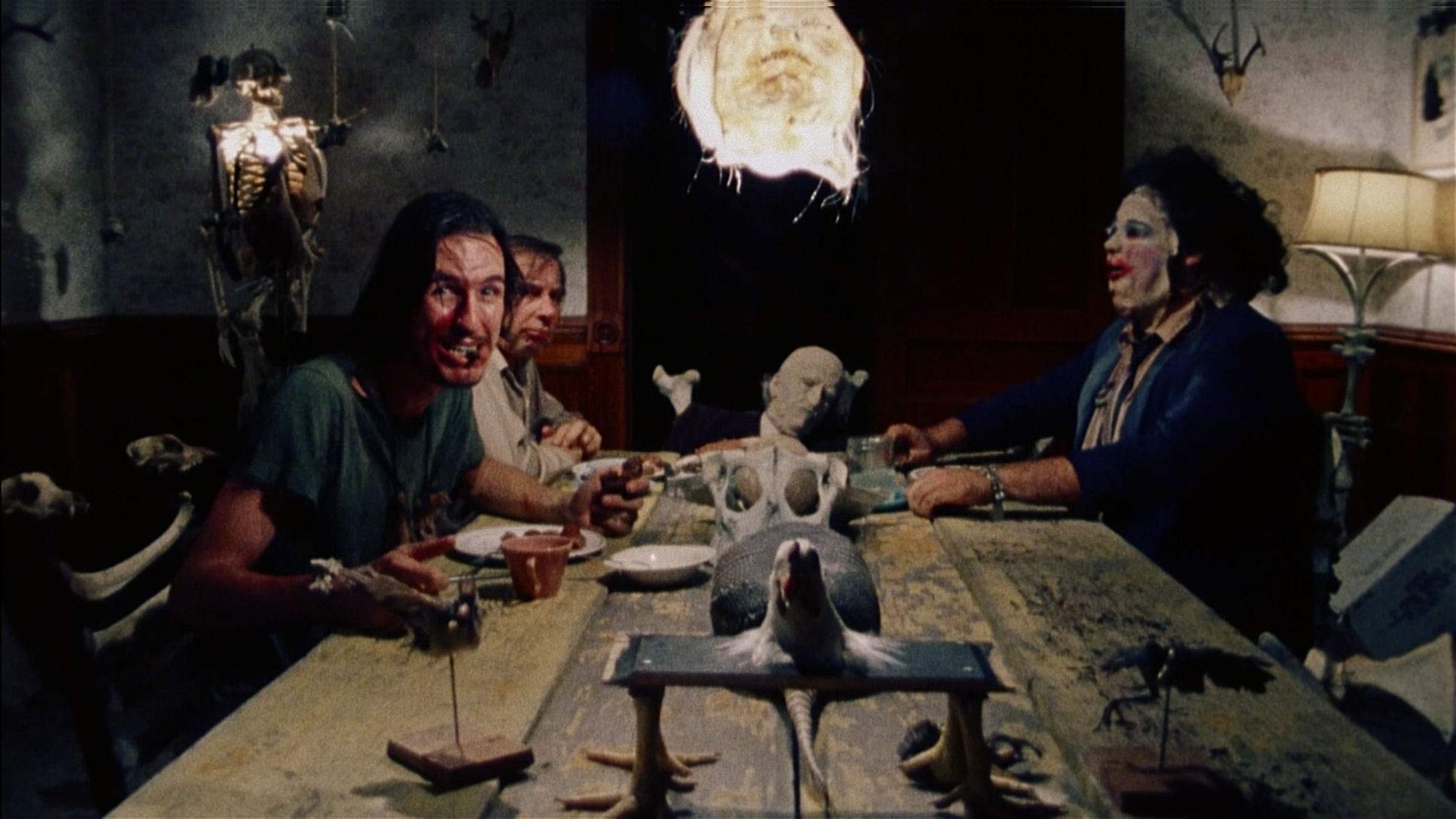 It’s a skin-crawling parody of wholesomeness — the family is, after all, just doing what they do — and the terror lies in understanding how close it is to our own tables. (Well, that and the screeching sound design.)
It’s a skin-crawling parody of wholesomeness — the family is, after all, just doing what they do — and the terror lies in understanding how close it is to our own tables. (Well, that and the screeching sound design.)
But there are several other layers to examine in Texas Chainsaw‘s treatment of the theme. Chief among them, there is the division between Sally’s grandfather’s cabin and the adjacent nightmare abode in which the family lives, bickers, and kills. (The family that slays together stays together!)
In his landmark investigative study Every 12 Seconds, sociologist Timothy Pachirat wrote about his time working in slaughterhouse environments and the ways in which the politics of sight are manipulated, maintained, and obscured through divisions of labor and physical separation:
The slaughterhouse as a whole is divided into compartmentalized departments. The front office is isolated from the fabrication department, which is in turn isolated from the cooler, which is in turn isolated from the kill floor. It is entirely possible to spend years working in the front office, fabrication department, or cooler of an industrialized slaughterhouse that slaughters over half a million cattle per year without ever once encountering a live animal much less witnessing one being killed.
But second and most importantly, the work of killing is hidden even at the site where one might expect it to be most visible: the kill floor itself. The complex division of labor and space acts to compartmentalize and neutralize the experience of “killing work” for each of the workers on the kill floor. After the knocker shoots the cattle, they fall onto a conveyor belt where they are shackled and hoisted onto an overhead line. Hanging upside down by their hind legs, they travel through a series of ninety degree turns that take them out of the knocker’s line of sight. There, a presticker and sticker sever the carotid arteries and jugular veins. The animals then bleed out as they travel further down the overhead chain to the tail ripper, who begins the process of removing their body parts and hides. Of over 800 workers on the kill floor, only four are directly involved in the killing of the cattle and less than 20 have a line of sight to the killing. There is a kind of collective mythology built up around the knocker, a mythology that allows for an implicit moral exchange in which the knocker alone performs the work of killing, while the work of the other 800 slaughterhouse workers is morally unrelated to that killing. It is a fiction, but a convincing one: of all the workers in the slaughterhouse, only the knocker delivers the blow that begins the irreversible process of transforming the live creatures into dead ones. If you listen carefully enough to the hundreds of workers performing the 120 other jobs on the kill floor, this might be the refrain you hear: ‘Only the knocker.’ It is simple moral math: the kill floor operates with 120+1 jobs.
Leatherface serves as the knocker in Texas Chainsaw, a damaged, almost child-like figure, but one of mystery and malevolence. His brother harangues him for various missteps, but he’s simply credited as the Cook.
Meanwhile, the space between the two structures, and between the two characters, come to assume something like the division between the “clean” and “dirty” sides of the kill floor, as Pachirat explains:
To give another example of how the work of killing is compartmentalized, the kill floor is divided spatially into a clean side and a dirty side. The dirty side refers to everything that happens while the cattle’s hides are still on them and the clean side to everything that happens after the hides have been removed. Workers from the clean side are segregated from workers on the dirty side, even during food and bathroom breaks. This translates into a kind of phenomenological compartmentalization where the minority of workers who deal with the “animals” while their hides are still on are kept separate from the majority of workers who deal with the *carcasses* after their hides have been removed.
The logistical demands of slaughterhouse morality, cloaked in the world outside the film as a concession to “food safety,” have crept into the mechanics of daily life (and death). Further, if the relative safety of the cabin marks a kind of clean floor, that’s only because we’ve allowed it to seem so. If we can’t see it, it’s because we don’t believe it, and if we don’t believe it, it’s because it remains unseen.
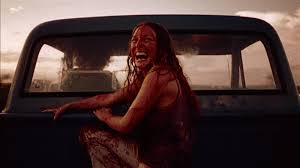
Hooper’s achievements in Texas Chainsaw are substantial. The nexus of familial bullying, perverse domesticity, and the collapse of the local economy (as prefigured by the earliest scene of an abandoned gas station, implicitly referencing the shortages of the time, and the Hitchhiker’s contention that bolt pistols put sledgehammer-wielding brainbashers like him out of work) segue into treatments of class, gender, and consumption, all glimpsed through notions of the seen and the unseen.
And “the seen and the unseen” — the eyes on screen, our eyes on the screen — marks a fundamental notion of horror cinema aesthetics as much as it does a politics of industrialized slaughter.
This is all on screen, or just off of it. Before the horror starts, Pam reads Sally’s horoscope in the van.
There are moments when we cannot believe that what is happening is really true. Pinch yourself and you may find out that it is.
Meanwhile, the old drunk at the gas station can’t suppress his amusement at our blindness:
Things happen here about, they don’t tell about. I see things.
In the world of The Texas Chainsaw Massacre, the eyes are wide open.

